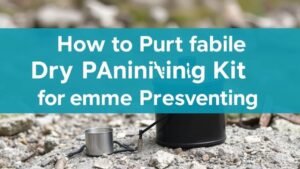How to Practice Gold Recovery in Your Backyard With Simulated Sediments
How to Practice Gold Recovery in Your Backyard With Simulated Sediments
Gold recovery is a fascinating and rewarding hobby that can be practiced right in your backyard. By using simulated sediments, hobbyists can replicate the conditions of a gold panning experience without the need for costly equipment or access to riverbanks. This article will provide a comprehensive guide on how to effectively practice gold recovery with simulated sediments.
Understanding Gold Recovery
Gold recovery refers to the process of extracting gold from various sources, particularly from sediments found in rivers and streams. most common technique utilized by enthusiasts is panning, a simple yet effective method that has roots tracing back to the Klondike Gold Rush.
The recovery process hinges on the principle of density; gold is significantly denser than most other materials found in sediments. This property allows gold to settle at the bottom of a pan or container, making it easier to isolate and collect.
Creating Simulated Sediments
An essential aspect of practicing gold recovery is simulating the conditions found in actual gold-bearing sediments. Here is how to create your own:
- Material Selection: Start with a mixture of sand, gravel, and small pebbles. You can collect these from a local source or purchase them from a gardening supply store.
- Adding Fines: Incorporate fine materials such as powdered clay or dirt to mimic natural sediment.
- Introducing Gold Flakes: For authenticity, add real gold flakes or substitute with other metals like brass shavings, which have similar density properties.
The Equipment You Need
To begin practicing gold recovery in your backyard, gather the following equipment:
- Panning Dish: A shallow, wide dish, often made of plastic or metal, designed for panning.
- Classification Sieve: A tool used to separate larger rocks and sediments from finer material.
- Containers: Buckets or pans to collect and hold your simulated sediments and recoveries.
- Gold Sniffer Bottle: A special bottle designed to suck up small amounts of gold and other heavy materials from your pan.
Step-by-Step Gold Recovery Process
The following step-by-step approach will guide you through the process of practicing gold recovery:
1. Prepare Your Materials
Begin by mixing your selected materials in a large container. Make sure that your simulated sediment mimics the characteristics of actual gold-bearing deposits.
2. Classify the Sediments
Use the classification sieve to remove larger particles from your simulated sediment. This helps in isolating finer materials where gold may settle.
3. Filling the Pan
Next, add a scoop of the classified sediments into your panning dish, filling it about one-third full. Add enough water to submerge the material. The water should help in separating gold from waste material.
4. The Panning Technique
With the pan submerged in water, use a gentle circular motion to allow lighter materials to wash away over the edge. Gradually tilt the pan to expose more sediment while retaining the heavier particles, including any gold.
5. Collect Gold
Once you have panned down to the heavier materials, you should notice smaller gold flakes or substitutes suspended among the debris at the pans bottom. Carefully use the gold sniffer bottle to collect your findings.
Real-World Applications and Benefits
Practicing gold recovery with simulated sediments serves multiple purposes:
- Educational Tool: This practice is an effective way to learn about geology, mineral properties, and environmental science.
- Skill Development: It enhances manual dexterity and observational skills necessary for successful panning.
- Recreational Activity: This relaxing hobby provides a sense of accomplishment while engaging with nature.
Safety Considerations
When engaging in this activity, it is crucial to consider safety. Ensure that all materials used are safe and that you practice environmental stewardship by not using substances harmful to the ecosystem.
Conclusion
Practicing gold recovery in your backyard using simulated sediments is an engaging way to explore the fundamentals of geology and mining. By following the outlined steps and principles, you can create a realistic panning experience that sharpens your recovery skills, educational knowledge, and appreciation for natural resources.
Whether you are a hobbyist looking for a fun weekend project or an educator seeking a hands-on activity for students, gold recovery can be both enriching and enjoyable. Remember to start small, refine your techniques, and enjoy the process of discovery.


